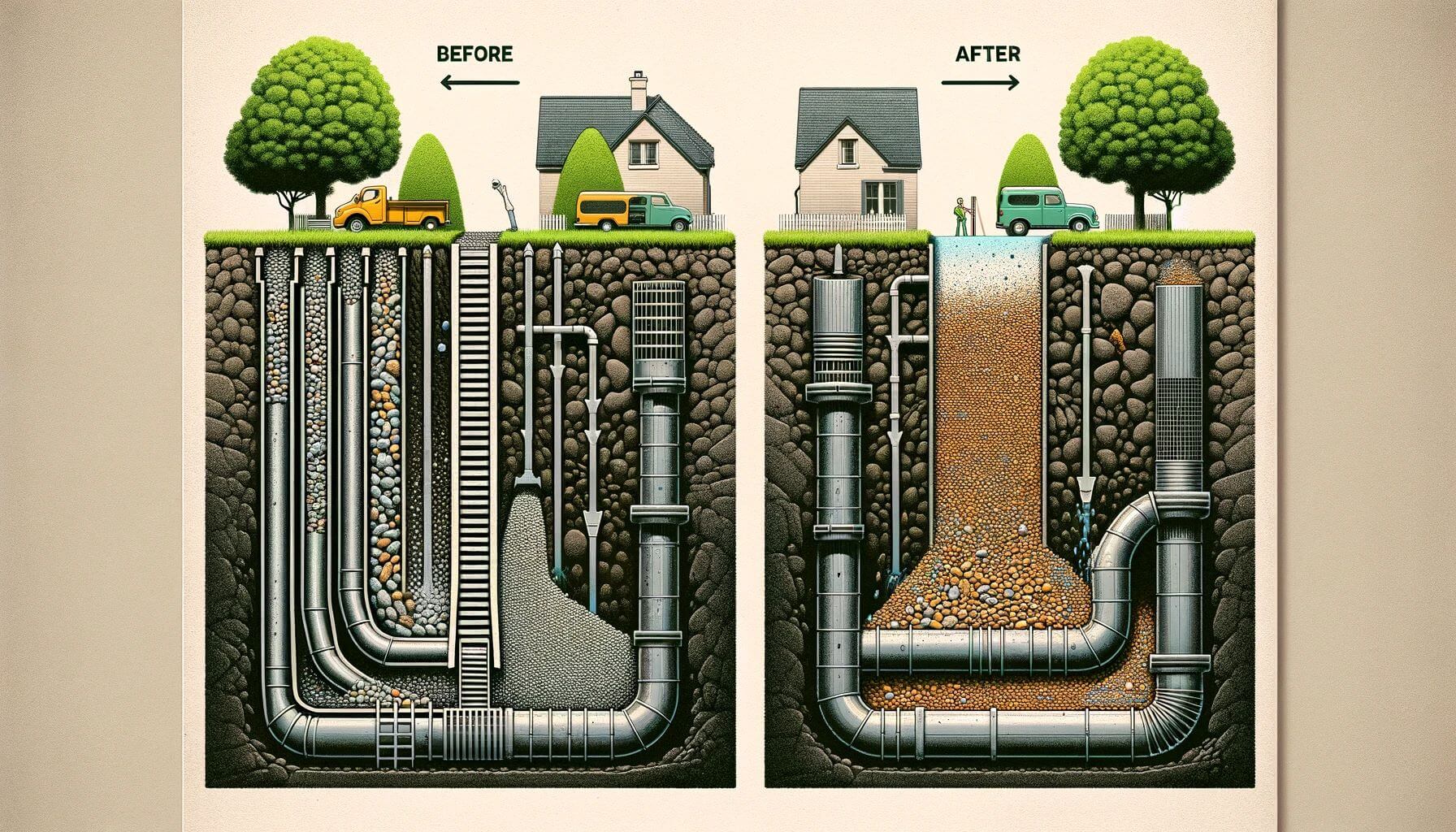
A French drain works like an underground river system beneath your basement floor, actively collecting and redirecting water away from your foundation. This ingenious system prevents flooding and keeps your basement as dry as your modern living room. Let’s dive into exactly how this water management superhero protects your home.
The Basic Mechanism
Water naturally seeks the path of least resistance, and a French drain creates that perfect path. Picture a perforated pipe wrapped in gravel running alongside your basement walls. As groundwater rises, it encounters this gravel-surrounded pipe and naturally flows into it through carefully designed holes. The water then travels along this underground pathway, similar to how your kitchen sink drains work, but on a much larger scale. This simple yet effective system keeps your basement dry and protects your home’s foundation from water damage.
The Installation Journey
Installing a French drain transforms your basement’s water management system through a carefully orchestrated process. First comes the excavation – a precise trench dug around your basement’s perimeter. This isn’t like installing bamboo flooring; it requires careful planning and execution. A water-permeable fabric lines the trench, creating a barrier that allows water through while keeping soil out. The perforated pipe goes in next, carefully graded to ensure water flows away from your home. Gravel surrounds the pipe, creating additional drainage pathways and protecting the system from soil intrusion.
Essential Components Working Together

Your French drain system relies on quality materials working in harmony. The perforated PVC pipe serves as the main highway for water transport, while clean gravel acts as a natural filter and flow director. Filter fabric wraps around this assembly like a protective shield, preventing soil from clogging the system. Much like how modern bathroom fixtures combine form and function, each component plays a crucial role in the system’s success.
Strategic Placement Matters
Location proves crucial for your French drain’s effectiveness, much like positioning outdoor structures for maximum benefit. The system must sit below your basement floor level, following the natural slope of your property. This strategic placement ensures water flows away from your foundation, protecting your home’s beautiful accents and structural integrity.
Maintaining Your Underground River
Just as you maintain your home improvement features, your French drain needs regular attention to function at its best. Annual inspections help catch potential issues before they become problems. Professional cleaning keeps the system flowing freely, while regular checks of the filter fabric and gravel bed ensure everything stays in proper working order. Think of it as giving your basement’s drainage system an annual health check-up.
The Professional Touch

While many home projects suit the DIY spirit, installing a French drain requires specialized expertise. Professional installers bring years of experience in proper grading, local building codes, and water management techniques. They understand how the system integrates with your existing drainage features and can ensure everything works together seamlessly.
How French Drain Work in A Basement as an Investment in Protection
Consider your French drain installation as an investment in your home’s future. The cost varies based on your specific situation, but the protection it provides proves invaluable. A properly installed system prevents expensive foundation repairs, protects your interior organization systems, and maintains your basement’s usability for years to come.
Looking to the Future
Your French drain can serve your home for decades with proper installation and maintenance. Modern systems often incorporate smart features like water sensors and monitoring capabilities. Regular documentation of your system’s layout helps future maintenance, while strategic placement of cleanouts and inspection points makes long-term care easier. This forward-thinking approach ensures your basement stays dry and usable, protecting your home’s value and your peace of mind.



